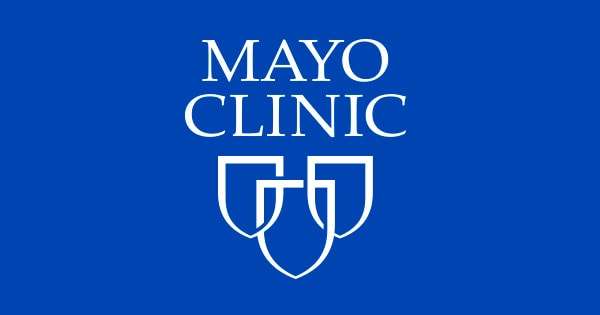What is the difference between physical therapy (PT) and occupational therapy (OT)? The two programs both fall within the rehabilitative sciences and share many similarities, however, there are distinct differences in the approach each takes with a patient’s rehabilitative care.
The Basic Difference
The most basic difference between physical therapy and occupational therapy is that a PT focuses on improving the patient’s ability to move their body whereas an OT focuses on improving the patient’s ability to perform activities of daily living. Additionally, PT’s foundation was in physical rehabilitation whereas OT was founded in mental healthcare and physical rehabilitation.
Occupational Therapy
Occupational therapists focus on adapting, modifying or changing daily activities that a person is required or wants to do. OTs might do this by altering the activity, altering the environment, or altering the skills of the person. At the person skill level, an OT might help patients improve their fine motor skills. Fine motor skills are typically small movements made with your upper body. They are essential for many daily activities such as picking up a toothbrush and brushing your teeth, cutting your food with a fork and knife, getting dressed, using a smartphone, or driving. For patients with mental health challenges, an OT might improve skills by increasing the use of positive coping strategies that allows the patient to work or be successful in school.
OTs are problem solvers who enjoy helping people better their lives by regaining independence after an injury or by helping children and adults with intellectual or developmental delays adapt to daily life. From neonatal care all the way throughout the lifespan, OTs are compassionate clinicians who consider the whole person and develop therapies taking in to account physical, emotional, and environmental factors that affect participation and performance in meaningful activities.
Physical Therapy
Physical therapists are movement experts who optimize quality of life through prescribed exercise, hands-on care, and patient education. They are also problem solvers who are passionate about getting their patients back on their feet. PTs focus on restoring the ability to move, reducing pain, and improving gross motor skills while promoting function and independence, and preventing disability. Gross motor skills are typically developed in childhood and are used in the movement and coordination of the arms, legs, and other large body parts.
PTs often work with patients who may be recovering from an injury that has impacted these skills. The focus is not only on rehabilitation, but also on the prevention of further injury. Functional and pain-free movement is essential to ones quality of life. Physical therapists also create and develop treatment plans to improve mobility to help their patients avoid surgery or prescription pain medications. PTs also understand the emotional aspects of recovering from an injury and are often their patient’s biggest cheerleaders.
Career Options
PTs and OTs can be found in any number of settings including hospitals, private practice, early intervention, and long-term care facilities, working with patients across the lifespan from infants and children to adults and the elderly. PTs and OTs aren’t confined to typical healthcare settings as therapists also work in schools, in fitness or wellness facilities, sports settings, and even travel to patients’ homes.
The career opportunities will continue to grow as the population is living longer, more active lives. According to the Bureau of Labor Statistics, the potential job growth for physical therapy is 28 percent and 24 percent for occupational therapy by 2026—much faster than the average for all occupations.
Ready to get started? Learn more about our Occupational Therapy and Physical Therapy program options.

Share on Pinterest
Physical therapy and occupational therapy are two types of rehabilitative care. The goal of rehabilitative care is to improve or prevent the worsening of your condition or quality of life due to an injury, surgery, or illness.
While there are some similarities between physical therapy and occupational therapy, there are also key differences.
This article will take a closer look at both types of therapies, the benefits they offer, and how they differ from one another.
What are the key differences?
Physical therapy, also known as PT, focuses on helping improve your movement, mobility, and function. A physical therapist may do this by using a variety of exercises, stretches, or other physical activities.
For example, someone who has had knee replacement surgery may visit a physical therapist as part of their recovery.
The physical therapist will work with the patient to help strengthen their knee and increase the range of motion in their knee joint. This can help them move more easily with less pain and discomfort.
Occupational therapy, also known as OT, focuses on helping you perform daily tasks more easily. This type of therapy focuses on improving your fine and gross motor skills so you can carry out specific day-to-day activities. The occupational therapist will also focus on making your home or school environment more optimal for your everyday life.
For example, an occupational therapist may help someone recovering from a stroke relearn how to do daily tasks, like dressing or eating with utensils. They may also make changes in the home, like installing a grab bar in the shower.
What are the similarities?
Despite their differences, there are some ways that PT and OT are similar. These include:
- Overall purpose. PT and OT both aim to improve your overall functioning, quality of life, and knowledge about how to maintain your health and well-being.
- Conditions. There’s considerable overlap with the health conditions for which both therapies may be recommended.
- Design. Both types of therapy provide hands-on care that’s tailored to the patient’s specific needs.
- Tasks. There can be some overlap in the tasks performed. For example, occupational therapists may also teach stretches or exercises. Physical therapists may work on movements to help with daily activities, such as getting in and out of the tub.
- Goals and monitoring. Both types of therapy set goals and assess your progress as you work to achieve them.
What does an occupational therapist do?
Now let’s look at OT a little more closely and what it entails.
What are the goals of occupational therapy?
The overarching goals of OT are to:
- maximize your ability to safely and effectively perform various daily tasks
- promote independence and productivity
- educate caregivers on how to help someone who is undergoing OT
When is occupational therapy needed?
OT may be recommended when a condition or illness affects your ability to do various day-to-day tasks. Some examples of conditions that OT may be used for include:
- recovery from an injury or surgery
- pain management
- neurological conditions, such as multiple sclerosis, cerebral palsy, or recovery from a stroke
- joint conditions, such as osteoarthritis and rheumatoid arthritis
- hand conditions, such as carpal tunnel syndrome and trigger finger
- developmental conditions, such as autism spectrum disorder (ASD), learning disorders, and intellectual disabilities
- psychological conditions, such as depression and anxiety
- dementia or Alzheimer’s disease
What type of therapy can you expect?
The occupational therapist will review your medical history and your condition to determine what your needs are. Then, they’ll use this information to develop a therapy plan and set specific goals.
Some of the things that may be involved as part of OT include:
- helping you learn or relearn how to perform daily tasks, such as getting dressed, eating, and bathing
- assessing your home, school, or workplace to identify ways to make your daily tasks easier
- teaching you how to use assistive devices, such as wheelchairs and walkers
- helping you with tasks that require fine motor skills, such as writing or buttoning a shirt
- training you on ways to safely get into and out of chairs, your bed, or the bathtub
- showing you exercises you can perform to help increase flexibility or reduce pain
- assisting you with programs that help you return to work
- teaching you strategies for managing stress
- educating your loved ones and caregivers on how to effectively support you in your day-to-day life
Where can you receive occupational therapy?
Occupational therapists work in a variety of facilities, including:
- outpatient clinics or offices
- inpatient facilities, such as hospitals and nursing homes
- mental health facilities
- schools
- home health agencies
Which therapy to choose?
So how do you know which type of therapy is right for you? That depends on your condition and your specific needs.
If you have a condition that’s affecting your ability to walk or move a body part without pain, you may want to consider a physical therapist. They can work with you to reduce pain, improve your mobility, strength, and range of motion through targeted exercises, stretches, and other methods.
Or maybe you’ve noticed that you’re having a hard time performing daily tasks, such as picking up objects or getting dressed. In this case, working with an occupational therapist could help improve the motor skills needed for these specific tasks.
It’s important to talk to your doctor about the type of therapy that’s right for you. They can help advise you on the benefits of each therapy, and which one is right for your specific needs.
The bottom line
Physical therapy (PT) and occupational therapy (OT) are types of rehabilitative care. While they have similar goals and treat many of the same conditions, they also differ.
PT focuses on restoring or improving movement, strength, and range of motion. OT aims to improve the motor skills you need to perform daily tasks.
Which type of therapy you choose depends on your specific condition and individual needs. Working closely with your doctor can help you decide which therapy is best suited to you and your goals.




